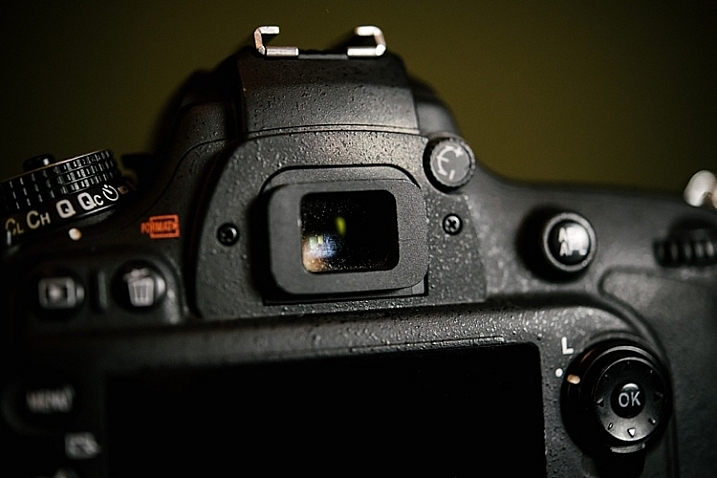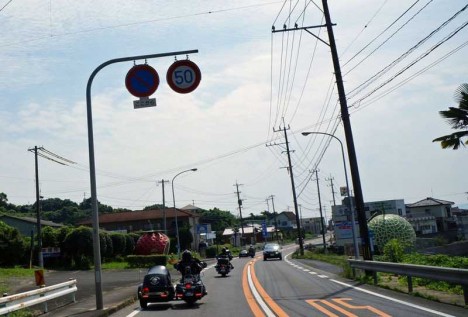$ (document).ready(function() { SampleGalleryV2({“containerId”:”embeddedSampleGallery_4447936161″,”galleryId”:”4447936161″,”isEmbeddedWidget”:true,”selectedImageIndex”:0,”isMobile”:false}) });
Fujifilm has just introduced its newest APS-C mirrorless camera, the X-S10. It brings the X-T4’s still image capabilities into a smaller, more affordable package, with nearly the same in-body stabilization rating.
The Fujifilm X-S10 features a 26.1MP X-Trans sensor and X-Processor 4, both borrowed from the X-T4. What isn’t lifted from the higher-end model is an all-new in-body image stabilization system, re-designed for the X-S10’s more compact form and 30% smaller than the X-T4’s IBIS unit. It’s rated up to 6 stops of shake reduction (compared to the X-T4’s 6.5) and achieves that level of performance with most of Fujifilm’s unstabilized lenses.
The X-S10 offers a fully articulating 3″ LCD with 1.04 million dots, and a built-in electronic viewfinder that’s a bit lower resolution than what you’ll find on the X-T4: 2.36M dots compared to 3.69M. The camera offers a single UHS-I SD card slot and its battery is rated to 325 shots per charge.
For video shooters the X-S10 provides 4K/30p recording, as well as microphone input and headphone connection via adapter. Flat F-Log recording is supported but, unlike the X-T4, footage can only be captured internally at 8-bit 4:2:0, though it can be recorded externally at 10-bit 4:2:2.
The Fujifilm X-S10 is scheduled to arrive in November for $ 1000 body-only, $ 1400 for XF 18-55mm F2.8-4 kit, or $ 1500 for XF 16-80mm F4 R OIS WR kit.
Press releas:
Fujifilm Introduces X-S10 Mirrorless Digital Camera
Up to 6.0-stops of In-Body Image Stabilization in a compact, lightweight body
Valhalla, N.Y. – October 15, 2020 – FUJIFILM North America Corporation today announced the launch of FUJIFILM X-S10 (X-S10), the newest addition to the X Series family of compact and lightweight mirrorless digital cameras. X-S10 is expected to be available in November with two lens kit options.
Equipped with key features including the 26.1MP X-TransTM CMOS 4 sensor, and the high- speed image processing engine, X-Processor 4, as well as In-Body Image Stabilization (IBIS), the X-S10 offers maximum functionality in a compact body.
“X-S10 is a perfect fit for anyone who needs a lightweight imaging solution with professional features for both photo and video,” said Victor Ha, senior director of marketing and product management for FUJIFILM North America Corporation’s Electronic Imaging Division. “It offers something for everyone; the popular AUTO/SP (Scene Position) Mode automatically adjusts camera settings to produce stunning images without the need to make fine adjustments to image settings. The advanced video capabilities can either produce sharp 4K/30P 4:2:2 10-bit video or high-speed full-HD video at 240fps, and the vari-angle LCD screen can also be flipped forward 180 degrees, giving everyone from photographers and filmmakers to vloggers and hobbyists something to love about this camera.”
Main product features:
A newly developed, smaller IBIS for its compact body
- The camera’s IBIS mechanism is approximately 30% smaller in volume and weight than the previous, similar X Series model*1. Despite its small size, weighing just 465g (1.02lb), X-S10 delivers up to 6.0-stops*2 of five-axis image stabilization. It is also the first mid-range X Series camera to use a motion sensor retention mechanism, which is a mechanical shock absorber that guards against slight vibrations that may come from the shutter unit, adding another level of stability beyond what was previously available in X Series products to ensure that image clarity and resolution are maintained.
- To further assist with hand-held stability, X-S10 features a large, ergonomic magnesium- alloy grip, making it easy to keep the camera stable when large lenses are mounted. The design also features a magnesium-alloy front and top-plate to keep the body rigid and robust.
Legendary Film Simulation Modes and updated AUTO functions for outstanding image quality
- FUJIFILM Film Simulation Modes were created to celebrate the history of photographic film by digitizing some of the industry’s most iconic analog films. X-S10 features 18 Film Simulation Modes, including ETERNA Bleach Bypass, which creates a beautiful, desaturated, high-contrast look.
- To complement these Film Simulation Modes, X-S10 also offers an updated [AUTO / SP (Scene Position)] mode that automatically adjusts shooting settings to the given scene, without the need to make further, fine adjustments in Settings. Now, photographing landscapes with clarity and vivid colors, making portraits with beautiful skin tones, and creating evenly-balanced images in back-lit conditions are possible, regardless of skill level.
Dependable AF and High-Speed Burst Mode performance for those important moments
- The combination of X-S10’s high-speed AF and AF-tracking performance with the X- TransTM CMOS 4 sensor’s 2.16 million phase detection pixels and X-Processor 4’s computing power provides quick and accurate autofocus results, achieving focus in as fast as 0.02 seconds in some cases, even at -7.0 EV*3.
- X-S10 is equipped with high-precision Tracking AF for moving subjects and Face/Eye AF function to track a subject’s face and eyes.
- Offers blackout-free, high-speed burst shooting of 30fps with the electronic shutter and 8fps when using the mechanical shutter*4.
Vari-angle LCD monitor and viewfinder that supports three Boost modes
- X-S10 has a vari-angle LCD monitor that can rotate up to 180 degrees, making it useful not only for selfies but also for stills and videos taken from various camera positions.
- The viewfinder’s Live View function has three Boost modes available, including Low
Light Priority, Resolution Priority Model, and Frame Rate Priority.
Extensive video-recording functions
- X-S10 generates 4K video from the amount of data equivalent to 6K to ensure the footage is in high resolution with low noise. It supports recording 4K/30p 4:2:0 8-bit video onto an SD card inserted in the camera, and outputting 4K/30p 4:2:2 10-bit video via the HDMI port.
- The X-S10 camera is also capable of high-speed full-HD recording at 240fps, producing up to 10x slow-motion footage of a fast-moving subject’s split-second motion.
- In addition to X-S10’s IBIS, its Digital Image Stabilization (DIS) mode powerfully compensates for camera shake even when walking with the camera. Adding IS Mode Boost provides even more stabilization, nearly eliminating camera shake when it is used from a fixed, hand-held position.
- With a dedicated movie recording button on its top-plate, X-S10 lets users start recording video even when the camera is set to stills mode. It will also automatically set exposure and focus settings if the camera is in an AUTO shooting mode*5.
Pricing and Availability
X-S10 is expected to be available in the U.S. and Canada markets commencing November 2020 in black color, and will be offered in both a body-only and two XF lens kit options.
FUJIFILM X-S10 body-only: $ 999.95 USD / $ 1,349.99 CAD
FUJIFILM X-S10 with XF18-55mmF2.8-4 R lens kit: $ 1,399.95 USD / $ 1,899.99 CAD
FUJIFILM X-S10 with XF16-80mmF4 R OIS WR lens kit: $ 1,499.95 USD / $ 2,049.99 CAD
For more information, please visit https://fujifilm-x.com/en-us/products/cameras/x-s10/.
*1 When compared with the IBIS function featured in the FUJIFILM X-T4 mirrorless digital camera
*2 Offering a 6.0-stop advantage to 20 out of the 30 currently available, interchangeable X Series lenses (XF/XC lenses)
*3 Referenced performance available using the X-S10 with an XF50mmF1.0 lens
*4 High-speed continuous shooting without blackout (i.e. without the viewfinder going dark during shooting, causing the user to lose sight of the subject) applies only when using the X-S10 electronic shutter.
*5 The AF mode automatically switches to Continuous AF in these instances.
Fujifilm X-S10 specifications
| Price | |
|---|---|
| MSRP | $ 999 (body only), $ 1399 (w/18-55mm lens), $ 1499 (w/16-80mm lens) |
| Body type | |
| Body type | SLR-style mirrorless |
| Body material | Magnesium alloy |
| Sensor | |
| Max resolution | 6240 x 4160 |
| Image ratio w:h | 1:1, 3:2, 16:9 |
| Effective pixels | 26 megapixels |
| Sensor size | APS-C (23.5 x 15.6 mm) |
| Sensor type | BSI-CMOS |
| Color space | sRGB, Adobe RGB |
| Color filter array | X-Trans |
| Image | |
| ISO | Auto, 160-12800 (expands to 80-51200) |
| Boosted ISO (minimum) | 80 |
| Boosted ISO (maximum) | 51200 |
| White balance presets | 7 |
| Custom white balance | Yes (3 slots) |
| Image stabilization | Sensor-shift |
| Image stabilization notes | Up to 6 stops with select stabilized lenses. 5-5.5 stops with other lenses. |
| CIPA image stabilization rating | 6 stop(s) |
| Uncompressed format | RAW |
| JPEG quality levels | Fine, normal |
| File format |
|
| Optics & Focus | |
| Autofocus |
|
| Autofocus assist lamp | Yes |
| Digital zoom | Yes |
| Manual focus | Yes |
| Number of focus points | 425 |
| Lens mount | Fujifilm X |
| Focal length multiplier | 1.5× |
| Screen / viewfinder | |
| Articulated LCD | Fully articulated |
| Screen size | 3″ |
| Screen dots | 1,040,000 |
| Touch screen | Yes |
| Screen type | TFT LCD |
| Live view | Yes |
| Viewfinder type | Electronic |
| Viewfinder coverage | 100% |
| Viewfinder magnification | 0.93× (0.62× 35mm equiv.) |
| Viewfinder resolution | 2,360,000 |
| Photography features | |
| Minimum shutter speed | 900 sec |
| Maximum shutter speed | 1/4000 sec |
| Maximum shutter speed (electronic) | 1/32000 sec |
| Exposure modes |
|
| Built-in flash | Yes |
| Flash range | 7.00 m (at ISO 200) |
| External flash | Yes (via hot shoe) |
| Flash X sync speed | 1/180 sec |
| Continuous drive | 20.0 fps |
| Self-timer | Yes |
| Metering modes |
|
| Exposure compensation | ±5 (at 1/3 EV steps) |
| AE Bracketing | ±5 (2, 3, 5, 7 frames at 1/3 EV, 1/2 EV, 2/3 EV, 1 EV, 2 EV steps) |
| WB Bracketing | Yes |
| Videography features | |
| Format | MPEG-4, H.264 |
| Modes |
|
| Microphone | Stereo |
| Speaker | Mono |
| Storage | |
| Storage types | SD/SDHC/SDXC slot (UHS-I supported) |
| Connectivity | |
| USB | USB 3.2 Gen 1 (5 GBit/sec) |
| USB charging | Yes |
| HDMI | Yes (micro-HDMI) |
| Microphone port | Yes |
| Headphone port | No |
| Wireless | Built-In |
| Wireless notes | 802.11b/g/n + Bluetooth |
| Remote control | Yes (via smartphone) |
| Physical | |
| Environmentally sealed | No |
| Battery | Battery Pack |
| Battery Life (CIPA) | 325 |
| Weight (inc. batteries) | 465 g (1.03 lb / 16.40 oz) |
| Dimensions | 126 x 85 x 65 mm (4.96 x 3.35 x 2.56″) |
| Other features | |
| Orientation sensor | Yes |
| Timelapse recording | Yes |
| GPS | None |
Articles: Digital Photography Review (dpreview.com)





















































You must be logged in to post a comment.